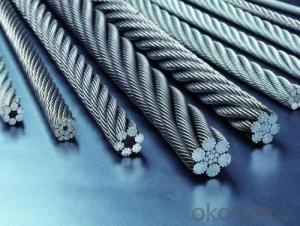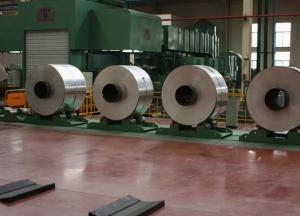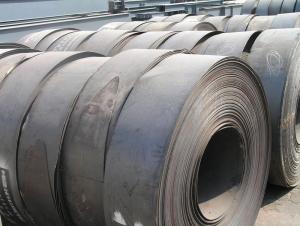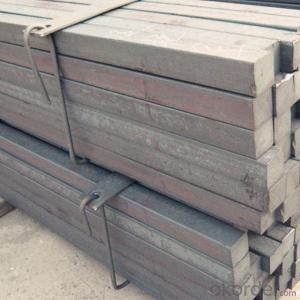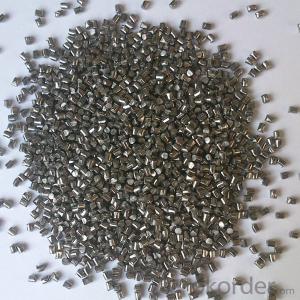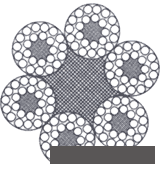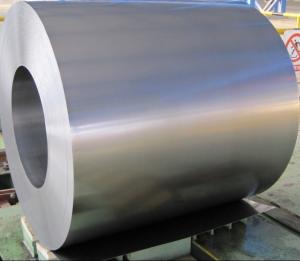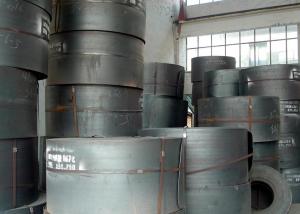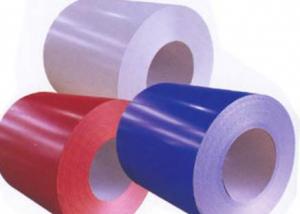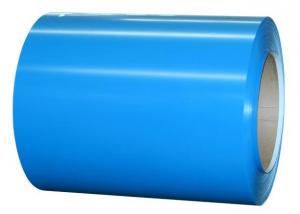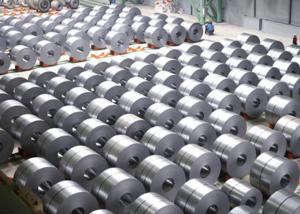ROUND STRAND WIRE ROPE
- Loading Port:
- China Main Port
- Payment Terms:
- TT OR LC
- Min Order Qty:
- -
- Supply Capability:
- -
OKorder Service Pledge
Quality Product, Order Online Tracking, Timely Delivery
OKorder Financial Service
Credit Rating, Credit Services, Credit Purchasing
You Might Also Like
- Q:How is carbon steel different from stainless steel?
- Carbon steel and stainless steel are both alloys of iron, but they differ in their composition and properties. Carbon steel contains a higher amount of carbon, making it more susceptible to corrosion and rust. On the other hand, stainless steel contains a higher amount of chromium, which forms a passive oxide layer that protects it from corrosion. This makes stainless steel more resistant to rust and staining than carbon steel. Additionally, stainless steel has a higher tensile strength and is more durable, while carbon steel is typically less expensive and more malleable.
- Q:How is steel used in the production of elevator systems?
- Steel is used in the production of elevator systems for its strength and durability. It is used to construct the elevator car, shaft, and supporting infrastructure, providing a sturdy framework for safe and efficient vertical transportation. Additionally, steel is often used for the cables and pulleys that enable the elevator to move and carry heavy loads, ensuring reliable and smooth operation.
- Q:How are steel pipes used in the transportation of natural gas?
- Steel pipes are commonly used in the transportation of natural gas due to their strength, durability, and resistance to corrosion. These pipes are used to create a network of pipelines that transport natural gas from production wells to distribution centers and ultimately to homes, businesses, and industries. The steel pipes are designed to withstand high pressure and can transport large volumes of natural gas over long distances efficiently and safely.
- Q:What are the different types of steel fasteners used in construction?
- There are several different types of steel fasteners commonly used in construction, including bolts, screws, nails, and rivets. These fasteners are essential for joining various components together, providing strength and stability to structures. Bolts are typically used for heavy-duty applications, while screws are versatile and can be used in multiple construction projects. Nails are commonly used for fastening wood materials, and rivets are frequently used to join metal components together. Each type of steel fastener has its own unique characteristics and uses, ensuring that construction projects are secure and durable.
- Q:What is the role of steel in the energy sector?
- Steel plays a crucial role in the energy sector as it is used in the construction of power plants, transmission towers, and pipelines. It provides strength and durability to these structures, ensuring their safety and longevity. Additionally, steel is utilized in the manufacturing of wind turbines, solar panels, and energy storage systems, enabling the production and distribution of renewable energy. Overall, steel is an essential material that supports the infrastructure and development of the energy sector.
- Q:What are the different types of steel wire mesh products?
- There are several types of steel wire mesh products, including welded wire mesh, woven wire mesh, expanded metal mesh, and perforated metal mesh. Each type has its own unique characteristics and applications. Welded wire mesh is made by welding individual wires together to create a strong and durable mesh panel. Woven wire mesh is created by weaving individual wires together in an interlocking pattern, providing flexibility and strength. Expanded metal mesh is produced by cutting and stretching a metal sheet, resulting in a diamond-shaped pattern with open areas. Perforated metal mesh is made by punching holes in a metal sheet, offering various hole sizes and patterns for different purposes.
- Q:What are the advantages and disadvantages of using stainless steel products?
- Some advantages of using stainless steel products include their durability, resistance to corrosion, and ease of maintenance. Stainless steel products are known for their strength and longevity, making them suitable for various applications. They are also highly resistant to rust and stains, making them ideal for use in environments with high moisture or exposure to chemicals. Additionally, stainless steel products are easy to clean and maintain, requiring minimal effort to keep them looking new. However, there are a few disadvantages to using stainless steel products. Firstly, they tend to be more expensive compared to other materials. This higher cost is due to the manufacturing process and the quality of the material. Secondly, stainless steel products can be prone to scratches and dents, which may affect their aesthetic appeal. Lastly, stainless steel has a higher thermal conductivity, meaning it can become hot or cold to the touch depending on the surrounding temperature. In summary, stainless steel products have numerous advantages such as durability, corrosion resistance, and easy maintenance. However, they can be more expensive, susceptible to scratches, and have higher thermal conductivity.
- Q:How is steel used in the manufacturing of electrical equipment?
- Steel is commonly used in the manufacturing of electrical equipment for its durability and strength. It is used to construct the structural framework of equipment such as transformers, generators, motors, and electrical enclosures. Steel also provides a stable base for components and helps in heat dissipation, ensuring the safe and efficient operation of electrical equipment.
- Q:How do steel products contribute to the construction of theme parks and entertainment venues?
- Steel products contribute significantly to the construction of theme parks and entertainment venues in various ways. Firstly, steel is known for its strength and durability, making it an ideal material for constructing large structures such as roller coasters, Ferris wheels, and other thrill rides. Its ability to withstand heavy loads and extreme weather conditions ensures the safety and longevity of these attractions. Additionally, steel plays a crucial role in the construction of the framework and support systems of buildings within theme parks and entertainment venues. From the skeletal structure of indoor theaters and concert halls to the framework of outdoor stages and arenas, steel provides the necessary strength and stability to ensure the safety of performers, spectators, and equipment. Moreover, steel products are widely used in the fabrication of decorative and architectural elements found throughout theme parks and entertainment venues. From ornate entrance gates and signage to intricate sculptures and art installations, steel allows for intricate designs and shapes, adding aesthetic appeal and enhancing the overall experience for visitors. Overall, the versatility, strength, and durability of steel products make them essential in the construction of theme parks and entertainment venues, contributing to the safety, functionality, and visual appeal of these attractions.
- Q:How is steel used in the production of amusement park rides?
- Steel is commonly used in the production of amusement park rides due to its strength and durability. It is used to build the framework and support structures of the rides, ensuring their stability and safety. Steel is also used to create the tracks, loops, and other intricate components that make up the thrilling elements of these rides. Additionally, steel is utilized in the manufacturing of roller coaster cars and other ride vehicles, providing a safe and enjoyable experience for riders.
1. Manufacturer Overview |
|
|---|---|
| Location | |
| Year Established | |
| Annual Output Value | |
| Main Markets | |
| Company Certifications | |
2. Manufacturer Certificates |
|
|---|---|
| a) Certification Name | |
| Range | |
| Reference | |
| Validity Period | |
3. Manufacturer Capability |
|
|---|---|
| a)Trade Capacity | |
| Nearest Port | |
| Export Percentage | |
| No.of Employees in Trade Department | |
| Language Spoken: | |
| b)Factory Information | |
| Factory Size: | |
| No. of Production Lines | |
| Contract Manufacturing | |
| Product Price Range | |
Send your message to us
ROUND STRAND WIRE ROPE
- Loading Port:
- China Main Port
- Payment Terms:
- TT OR LC
- Min Order Qty:
- -
- Supply Capability:
- -
OKorder Service Pledge
Quality Product, Order Online Tracking, Timely Delivery
OKorder Financial Service
Credit Rating, Credit Services, Credit Purchasing
Similar products
New products
Hot products
Related keywords
